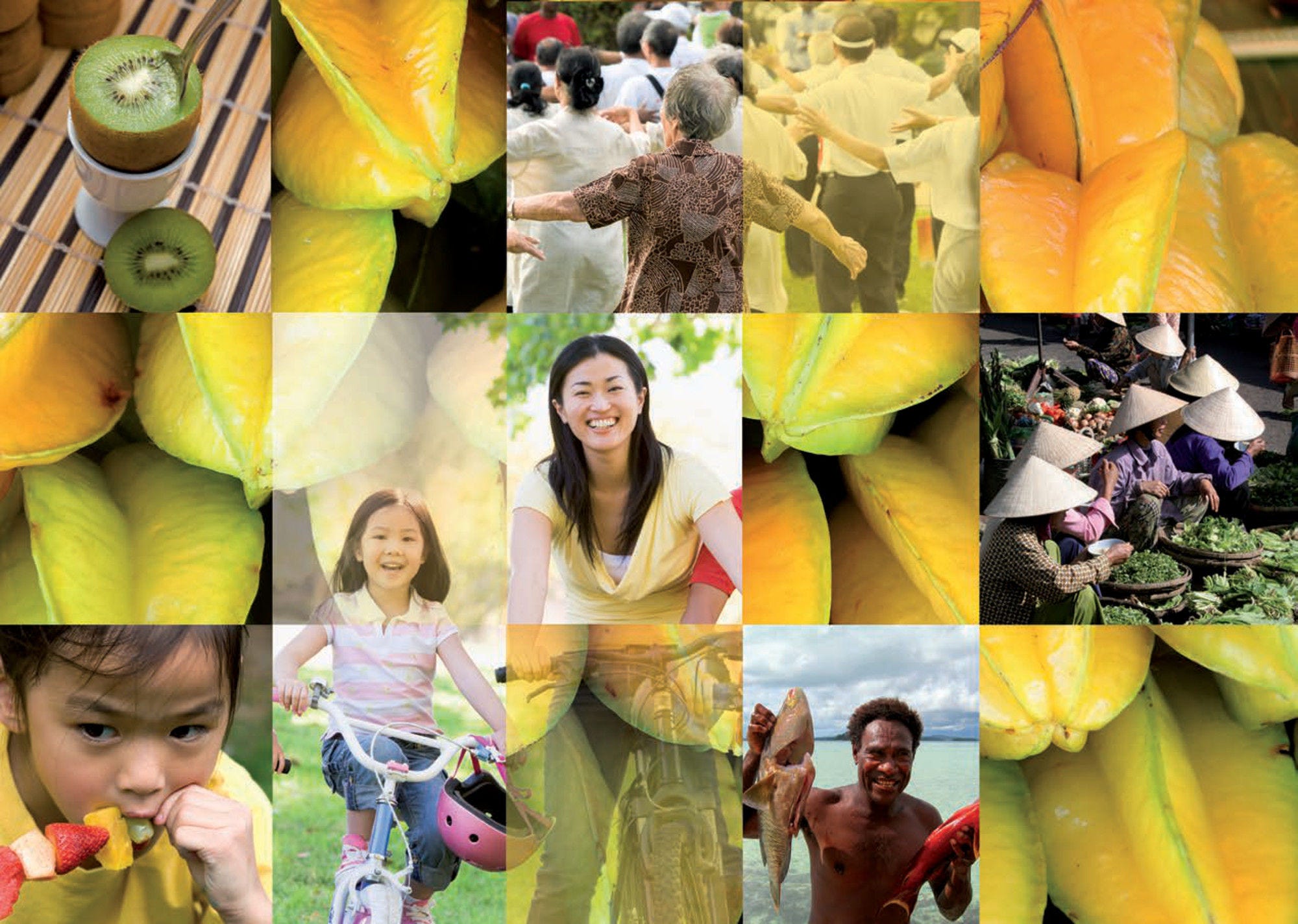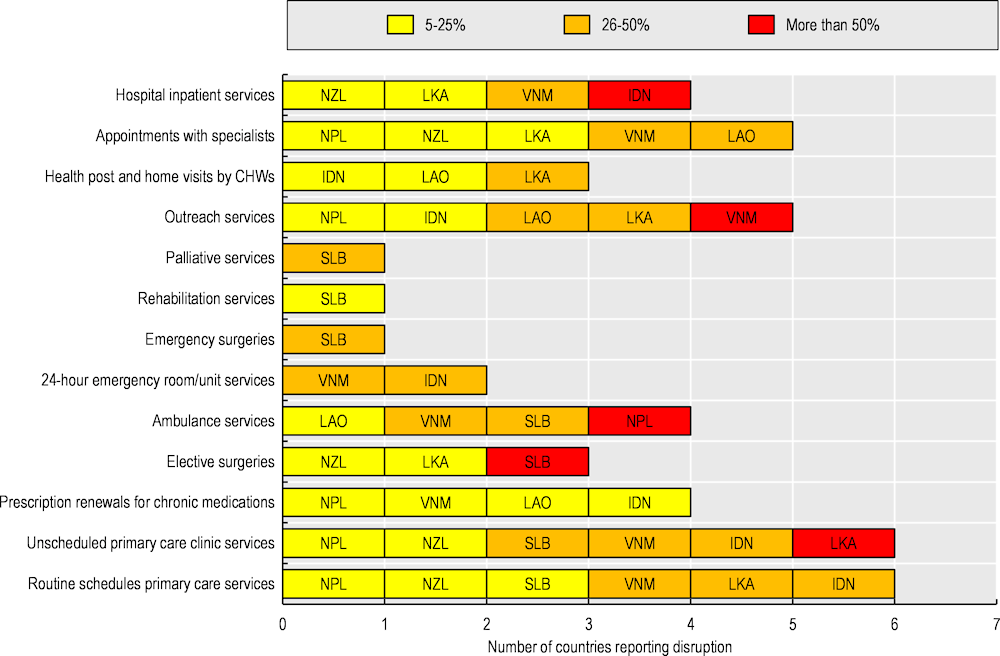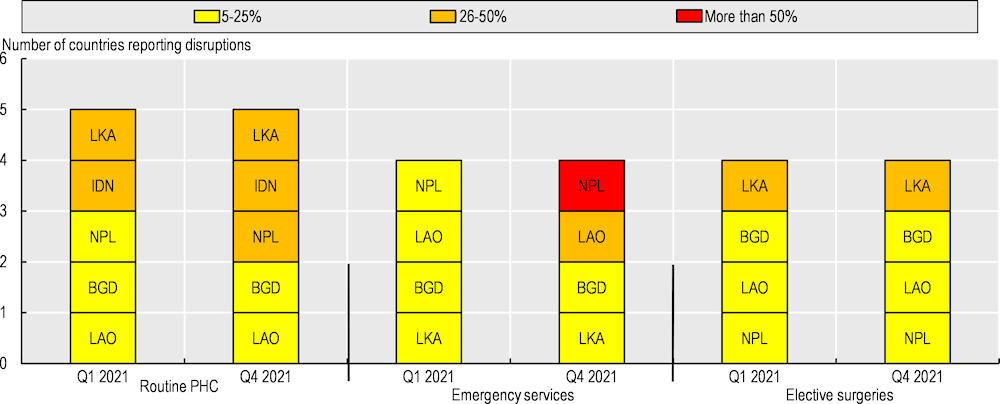Cancer is the second leading cause of death after CVD in the Asia-Pacific region. Cancer was the cause of an estimated 5 million deaths (or 24% of total NCD deaths) in Asia-Pacific in 2019.
There are more than 100 different types of cancers, with most named after the organ in which they start. Cancer occurs when abnormal cells divide without control and are able to invade other tissues. While genetics are a risk factor, only about 5% to 10% of all cancers are inherited. Modifiable risk factors such as smoking, obesity, exercise, and excess sun exposure, as well as environmental exposures, explain as much as 90‑95% of all cancer cases (Islami et al., 2017[1]; Wilson et al., 2018[2]; Whiteman and Wilson, 2016[3]). Prevention, early detection and treatment remain at the forefront in the battle to reduce the burden of cancer, and progress towards fighting cancer needs to be monitored not only by mortality rates but also by survival estimates, taking account of early detection of the disease and the effectiveness of early treatment (OECD, 2013[4]).
Myanmar had the highest cancer age‑standardised mortality rate with almost 200 deaths per 100 000 population in 2019 (Figure 3.16). Cancer deaths were less common in Sri Lanka, Fiji, Solomon Islands, Bangladesh, Papua New Guinea, and Korea, with less than 90 deaths per 100 000 population.
The average rates of death in lower-middle- and low-, as well as in high-income countries and territories in Asia-Pacific were lower than that of OECD countries ‑108 and 104, respectively, versus 114 deaths per 100 000 population in 2019‑, whereas upper-middle-income countries and territories in the region had comparatively higher rates at 115 deaths per 100 000 population in 2019. While cancer mortality had decreased in most Asia-Pacific countries and territories and territories, New Zealand and DPRK reported an increase from 2000 to 2019 of 15.2% and 12.1%, respectively, while Sri Lanka, the Philippines, India, Cambodia and Fiji reported increases from 2000 to 2019 of less than 5%.
Lung cancer was the leading type of cancer in across Asia-Pacific countries and territories (Figure 3.17), accounting for 20.7%, 17.9%, and 13.5% of all cancer deaths – on average – in high, upper-middle, and lower-middle- and low-income countries and territories in 2019, respectively. Liver cancer mortality is also high in lower-middle- and low-income countries and territories in the region, accounting for 12.2% of all cancer deaths on average in 2019. Myanmar had the highest cancer mortalities in the region; the large proportion of deaths was due to liver cancer. Besides Myanmar, liver cancer deaths occurred frequently in Cambodia, Viet Nam and Thailand. Incidence is expected to fall in coming decades, with increased immunisation for hepatitis B (see indicator “Childhood vaccination” in Chapter 7).
Other main types of cancer deaths were stomach, colorectal and breast cancer. Mortality from stomach cancer accounted for 5.8% and 9.1% of all cancer deaths in high-income and upper-middle-income countries and territories respectively, linked to Helicobacter pylori infection, with a high prevalence in China, Myanmar, Viet Nam, Indonesia and Nepal. The prevalence of colorectal cancer deaths was amongst the highest in the region in Brunei Darussalam and Singapore. Breast cancer deaths, the most common cause amongst women, were responsible for over 20% of all cancer deaths in DPRK, and the prevalence was also high in Papua New Guinea, Korea and Mongolia.
As with cardiovascular disease, the ageing of the population will lead to many more cases of cancer in coming decades, taxing underprepared health systems. Since the drugs and technologies for treating patients are expensive, cancer control planning in the Asia-Pacific region might more effectively target smoking, physical activity, and overweight/obesity. Early diagnosis is also a key to reducing mortality, so access to cancer diagnosis and care needs to be promoted through public health interventions or wider health coverage (OECD, 2013[4]).


